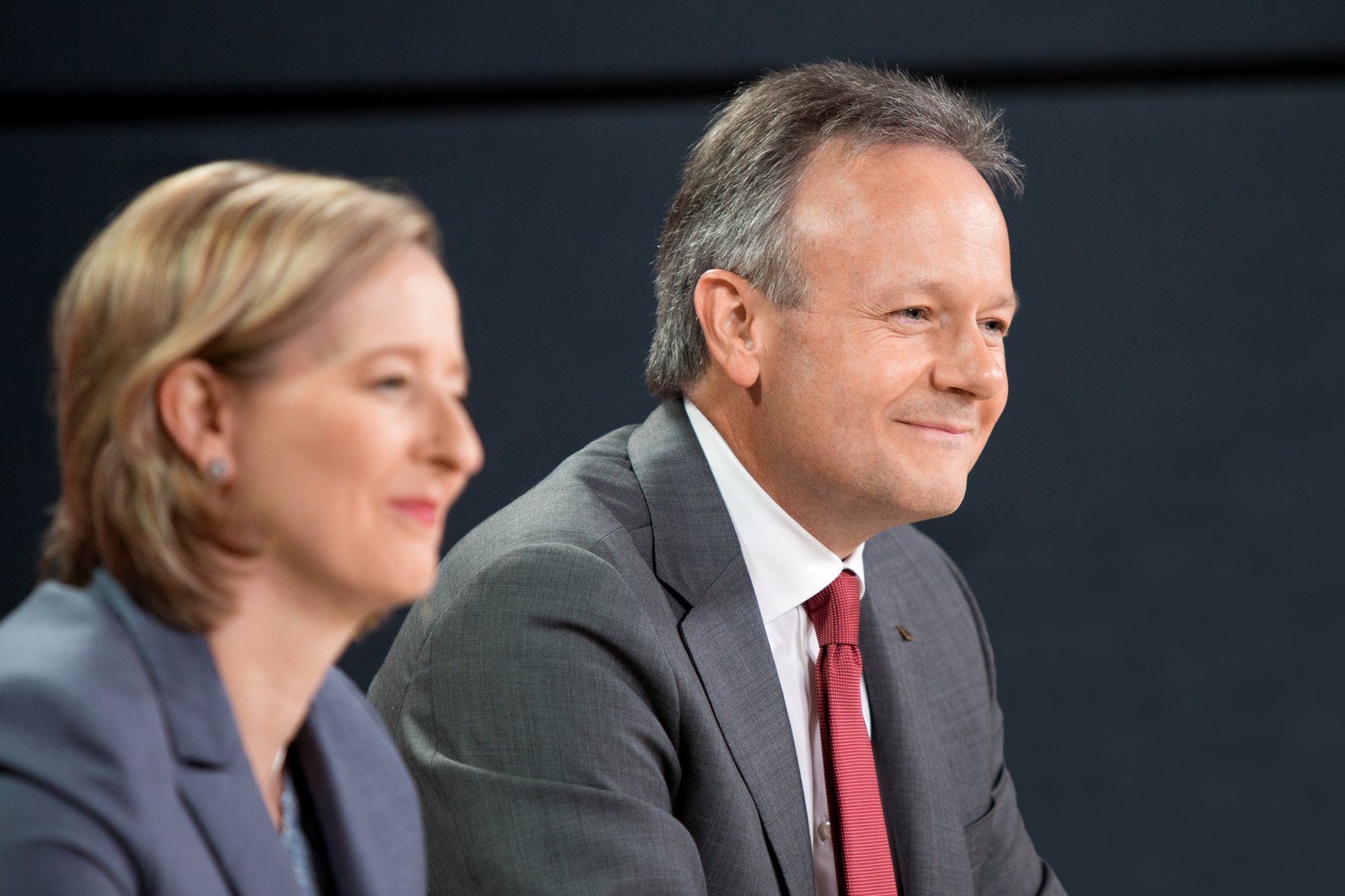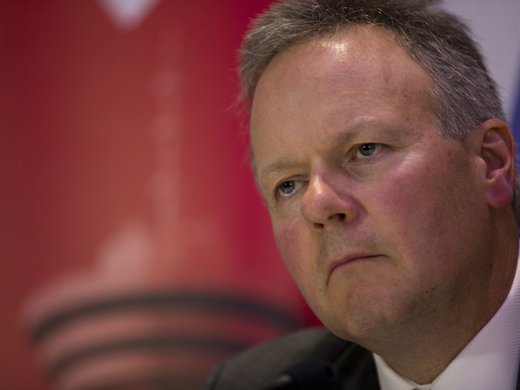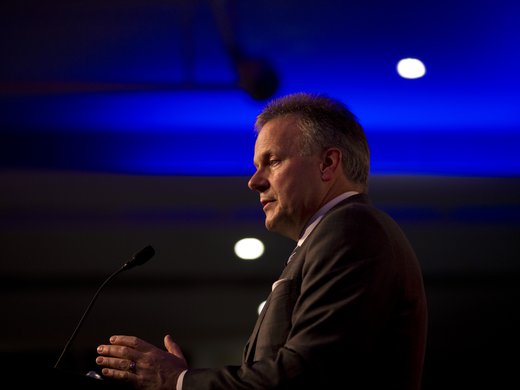The Canadian dollar was trundling along at about 78 US cents on the morning of March 13 when the highlights of Bank of Canada Governor Stephen Poloz’s latest remarks flashed across Bloomberg and Reuters terminals.
“After looking at a much wider range of labour market indicators, the Bank has concluded that there remains a degree of untapped supply potential in the economy,” Poloz said in the text of the speech he was about to read at Queen’s University in Kingston, Ontario. “This is important, for it means that Canada may be able to have more economic growth, a larger economy, and therefore more income per person, without generating higher inflation.”
The value of the currency plunged to about 77 US cents, where it stayed for the rest of the day.
Foreign exchange markets are notoriously skittish, but that was an outsized move, especially since Poloz hadn’t said anything new. The volatility suggests that the Bank of Canada still has some work to do in convincing traders that its policy is set by a group, not by diktat of the governor.
Poloz sees himself as the captain of a team, not as its coach or general manager. He insists that each member of the Governing Council has an equal voice, and that his role is to steer the group to a consensus during each policy deliberation. Poloz’s second-in-command, Carolyn Wilkins, the senior deputy governor, now takes a turn leading the press conference that follows the release of the central bank’s quarterly economic reports. It was a subtle change, made to reinforce the idea that Canadian monetary policy isn’t a one-man show.
It will be difficult to persuade Bay Street and Wall Street that Poloz is just another member of the policy committee, and not only because the governor alone has statutory responsibility for setting interest rates.
The financial press tends to personify institutional decision making. As Matthew Winkler, the founding editor of Bloomberg News, used to say, “names make news.”
So, market participants absorb a steady stream of stories about how “Poloz did this,” or how “Federal Reserve Chairman Jerome Powell did that,” even when in reality it was the Governing Council or the Federal Open Market Committee that made the decision. Markets have been conditioned to respond to the Great Man (or Woman) Theory of policy making.
That was evident in Canada this month.
Poloz’s comments about slack in the labour market had been made twice by the institution the week before.
On March 7, the Bank of Canada announced that it had decided to leave its benchmark interest rate unchanged, in part because wage growth remained “lower than would be typical in an economy with no labour market slack.”
In other words, there must still be slack, even though the unemployment rate, at 5.8 percent, is one of the lowest on record.
On March 8, Timothy Lane, a deputy governor, repeated the message in a speech in Vancouver.
“Even as regions such as British Columbia experience wage pressures and intensifying labour shortages, the elevated long-term unemployment rate and relatively low youth participation rate nationally suggest that there is still some slack in the Canadian labour market,” he said.
Lane’s speech was another of the Bank of Canada’s subtle innovations to its communications policy in recent years. The idea is to minimize misunderstandings, a chronic issue since Poloz made a point of abandoning explicit guidance.
The central bank realized last year that it had inadvertently created a series of vacuums in its schedule of policy announcements. The Governing Council meets eight times a year to consider whether an interest-rate change is needed. Four of those meetings come with the release of its quarterly economic outlook, the Monetary Policy Report (MPR), which includes a press conference. Poloz has also started using the opening statement to reporters to provide additional context, offering something approximating minutes. As a result, those four calendar dates have become a bonanza for observers of Canada’s central bank — myself included.
In contrast, each of the other four announcement dates offered nothing but a 400-word policy statement. Some on Bay Street and Wall Street assumed the Bank of Canada would only change policy when there was a press conference. Policy makers crushed that assumption on September 6, 2017, when they raised the benchmark rate a quarter point, even though it was an inter-MPR meeting.
Raising the rate then was probably the right decision, although it caused consternation. Investors were caught off guard, and frustration mounted because the central bank had no means to explain itself.
If the Bank of Canada published minutes, or allowed its deputies to speak more than a couple of times a year, it might not have ended up in that spot. Its ad hoc approach to increased transparency was positive, but the lack of a comprehensive plan ended up creating a situation where the central bank was offering a full description of its thinking only four times a year. It was reasonable for market participants to assume those four meetings would be the ones at which significant changes would be made.
That’s no longer the case.
Starting with Lane’s speech this month, the Bank of Canada will ensure that someone from the Governing Council speaks within a day or so of every policy decision. The remarks will update the public on the central bank’s interpretation of the most recent economic indicators and provide some context about the latest policy meeting.
The institution also chose to assign the task to a deputy, rather than Poloz or Wilkins — which is significant. In days past, the deputies did little more than echo the governor in public. That tradition is changing under Poloz, and Lane’s speech, which the central bank called an “economic progress report,” was the best example yet. If traders and investors weren’t paying attention to Poloz’s lieutenants before, they will have to now.
Maybe, in time, market participants will come to see central banking in Canada as a team sport. But not yet. The dollar was still trading at around 77 US cents on March 14, the day after Poloz reiterated what his deputy had said five days earlier.



